NVIDIA GeForce FX 5800 Ultra 128MB
|

As usual, before we proceed to analysis of the new accelerator we
recommend that you read the analytic article scrutinizing the architecture
and specifications of the NVIDIA
GeForce FX (NV30)
CONTENTS
-
General
information
-
Peculiarities
of the NVIDIA GeForce FX 5800 Ultra 128MB video card
-
Test
system configuration and drivers' settings
-
Test
results: briefly on 2D
-
RightMark3D
synthetic tests: philosophy and tests description
-
Test
results: RightMark3D: Pixel Filling
-
Test
results:
RightMark3D: Geometry Processing Speed
-
Test
results:
RightMark3D: Hidden Surface Removal
-
Test
results:
RightMark3D: Pixel Shading
-
Test
results:
RightMark3D: Point Sprites
-
Test
results:
3DMark2001 SE synthetic tests
-
Additional
theoretical information and summary on the synthetic tests
-
Information
on anisotropic filtering and anti-aliasing
-
Architectural
features and prospects
-
Test
results: 3DMark2001 SE: Game1
-
Test
results:
3DMark2001 SE: Game2
-
Test
results:
3DMark2001 SE: Game3
-
Test
results:
3DMark2001 SE: Game4
-
Test
results:
3DMark03: Game1
-
Test
results:
3DMark03: Game2
-
Test
results:
3DMark03: Game3
-
Test
results:
3DMark03: Game4
-
Test
results:
Quake3 ARENA
-
Test
results:
Serious Sam: The Second Encounter
-
Test
results:
Return to Castle Wolfenstein
-
Test
results:
Code Creatures DEMO
-
Test
results:
Unreal Tournament 2003 DEMO
-
Test
results:
AquaMark
-
Test
results:
RightMark 3D
-
Test
results:
DOOM III Alpha version
-
3D
quality: Anisotropic filtering
-
3D
quality:
Anti-aliasing
-
3D
quality in general
-
Conclusion
3D graphics, game tests
For estimation of the performance in 3D games we used:
-
Return to Castle Wolfenstein (MultiPlayer) (id Software/Activision) - OpenGL,
multitexturing, Checkpoint-demo,
test settings - maximum, S3TC OFF, the configurations can be downloaded
from here
-
Serious Sam: The Second Encounter v.1.05 (Croteam/GodGames) - OpenGL, multitexturing,
Grand Cathedral demo, test settings: quality, S3TC OFF
-
Quake3 Arena v.1.17 (id Software/Activision) - OpenGL, multitexturing,
Quaver,
test settings - maximum: detailing level - High, texture detailing
level - #4, S3TC OFF, smoothness
of curves is much increased through variables r_subdivisions "1"
and r_lodCurveError "30000" (at default r_lodCurveError is
250 !), the configurations can be downloaded from
here
-
Unreal Tournament 2003 Demo (Digital Extreme/Epic Games) - Direct3D, Vertex
Shaders, Hardware T&L, Dot3, cube texturing, default quality
-
Code Creatures Benchmark Pro (CodeCult) test demonstrates operation of
cards in the DirectX 8.1, Shaders, HW T&L.
-
AquaMark (Massive Development) test demonstrates operation of cards in
the DirectX 8.1, Shaders, HW T&L.
-
RightMark 3D v.0.4 (one of the game scenes) - DirectX 8.1, Dot3, cube texturing,
shadow buffers, vertex and pixel shaders (1.1, 1.4).
Quake3 Arena, Quaver



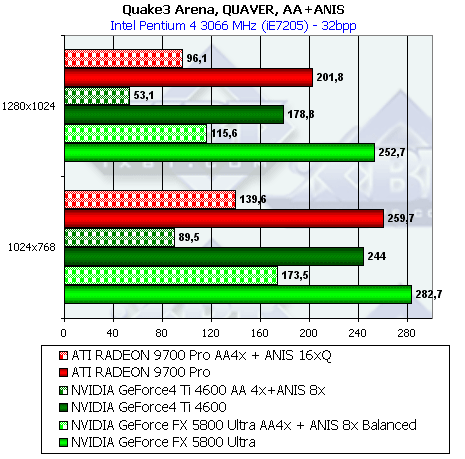

As expected, NVIDIA has the excellent optimization of the OpenGL driver
for this game. Although ATI has good scores as well, the NV30 is still
ahead.
Serious Sam: The Second Encounter, Grand Cathedral
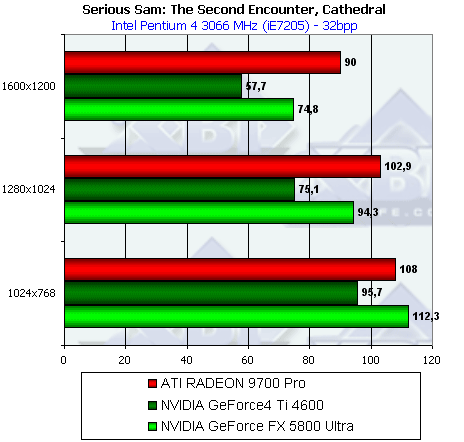
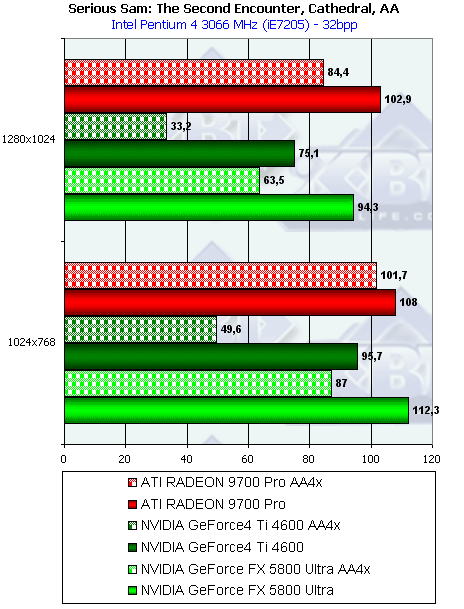
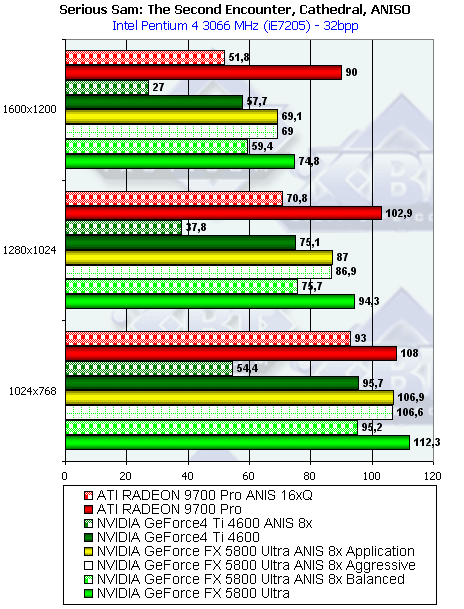
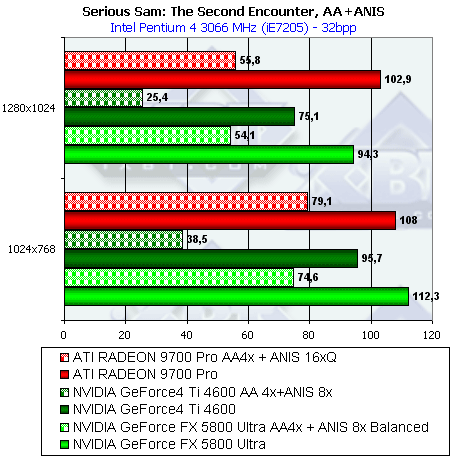

Here without the load the NV30 manages to win, but the losses in AA made
this card a loser in touch modes.
Return to Castle Wolfenstein (Multiplayer), Checkpoint

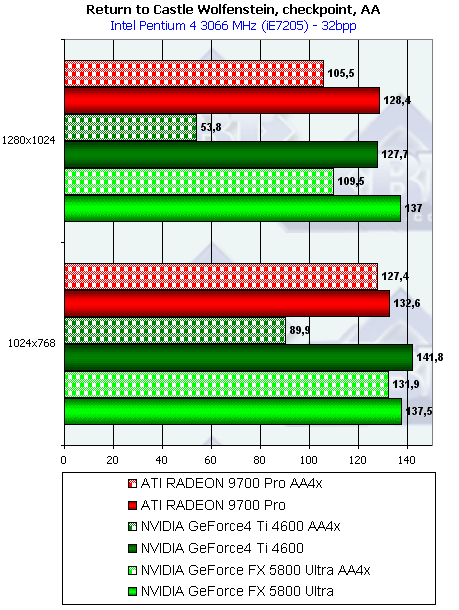
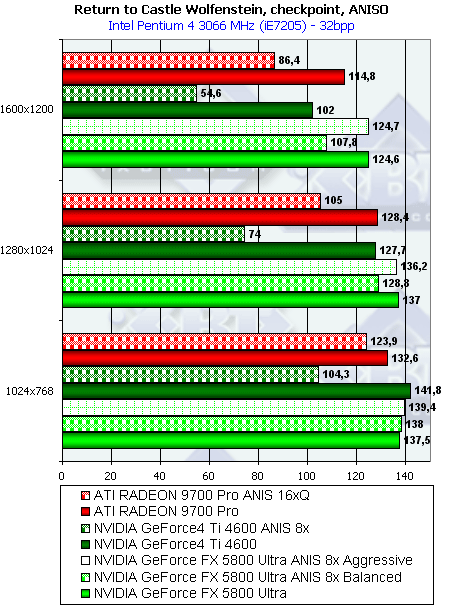
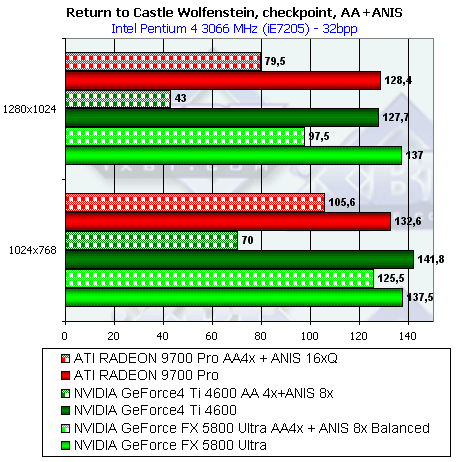
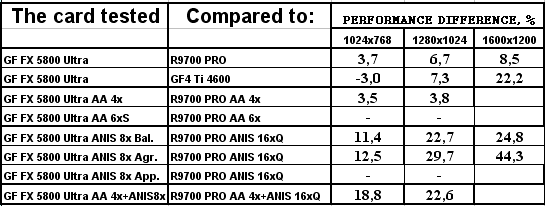
This game much depends on a processor, that is why the advantages are only
at 1600x1200. Not bad.
Code Creatures
This test is based on the CodeCult's engine which is used for several games.


I wish it were better...
Unreal Tournament 2003 DEMO

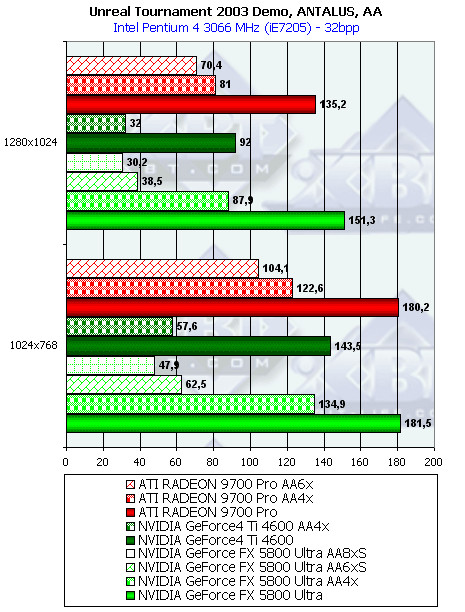
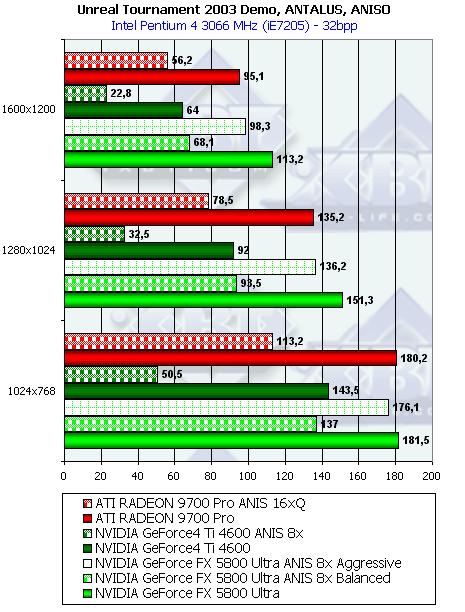

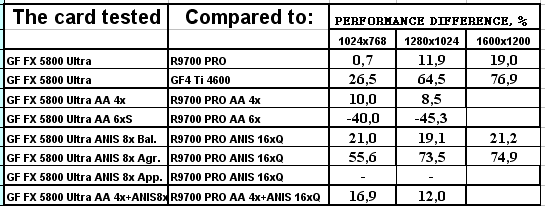
The losses with AA are made up for with the anisotropy, that is why on
the whole the NV30 performs quite well, though without the load the advantage
is extremely small.
[ Previous Part
(7) ]
[ Next Part (9)
]
Alexander Medvedev ( unclesam@ixbt.com)
Write a comment below. No registration needed!
|
|























